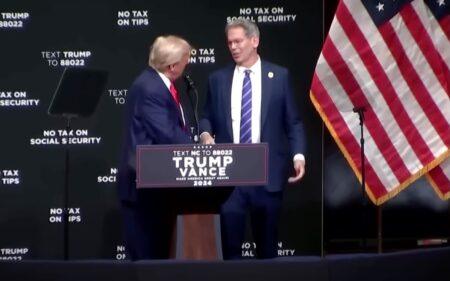Leading digital asset exchange, Bitfinex, has reportedly been sending huge amounts of Tether (USDT) tokens to cold storage vaults. This has raised even more concerns among crypto market participants regarding its operations – which regulators have been closely monitoring for nearly a year now.
Because Tether Ltd. and Bitfinex are managed and owned by some of the same entities, the US Commodities Futures Trading Commission (CFTC) had subpoenaed both firms on December 6th, 2017.
Dropping As Low As $0.85
As crypto market participants have observed, Tether’s USDT token appears to be losing its peg to the USD as it had dropped to its all-time low of $.85 on Kraken. At press time, USDT is trading at around $0.9874 – which suggests that investors might be losing confidence in Tether’s claim that it has enough USD reserves to back its stablecoin.
As covered, heightened fears regarding Tether’s and Bitfinex’s banking operations led to a massive USDT selloff on October 15th, and now the pair have raised even more concerns as a crypto wallet belonging to Bitfinex has now sent approximately 630 million USDT tokens to an address identified as “Tether treasury.”
On October 14th, the Bitfinex-linked wallet had sent 200 million USDT to Tether’s treasury address – a transaction that occurred right after the controversial stablecoin dropped to lows last seen in 2017.
25 Percent Drop In Market Capitalization
On October 16th, another 200 million USDT were transferred by Bitfinex’s wallet, when it appeared that the token was starting to recover its peg to the USD. Three days later, an additional 230 million USDT were sent to Tether’s treasury address.
The large transfers of USDT have now taken a significant amount of the most dominant stablecoin out of circulation – as the token’s market capitalization has now dropped by almost 25 percent and is currently just above the $2 billion mark.
Logical Move to Buy Back
Analysts are now beginning to question whether both Bitfinex’s and Tether’s incentives are aligned to keep the stablecoin operating at a price below its $1 peg. If there is a 1:1 reserve there is an oppurtunity cost to not buying back USDT and redeeming them for $1. This could explain the large amount of USDT that was removed from circulation. As covered, Tether and Bitfinex had stopped banking with Puerto Rico-based Noble bank and reports had surfaced on October 6th claiming that Bitfinex had started banking at HSBC.
Su Zhu, the CEO of Three Arrows Capital, a Singapore-based asset manager and independent researcher, had published a post on Medium (on October 18th) in which he was one of the first to propose the theory that Tether could be arbitraging the stablecoin market. Zhu also noted:
It’s a strong indicator that Tether themselves are arbitraging the current discount in USDT.
Zhu had also reportedly told Coindesk:
Anyone could make money by arbitraging the USDT spread (the price at which it trades for on exchanges). It would make sense that Tether itself would be participating in these buybacks.
Meanwhile, many traders have now complained that it’s not possible to get fiat money for their USDT tokens – even though Tether’s whitepaper clearly states that those who hold its stablecoin may “redeem” it for USD.








